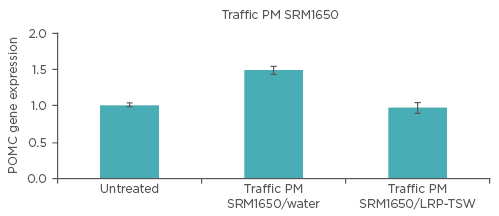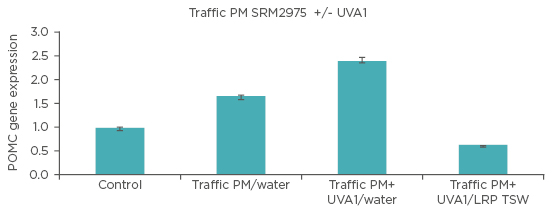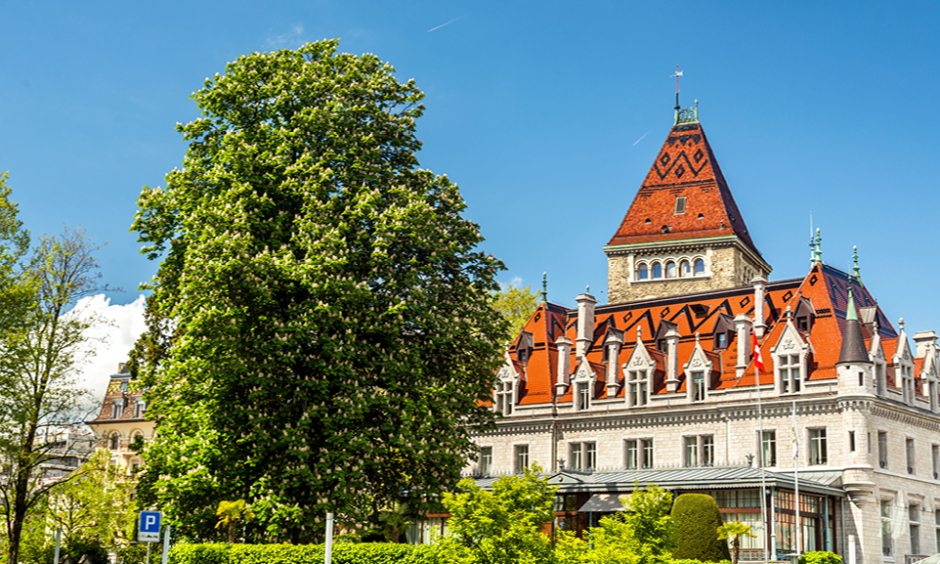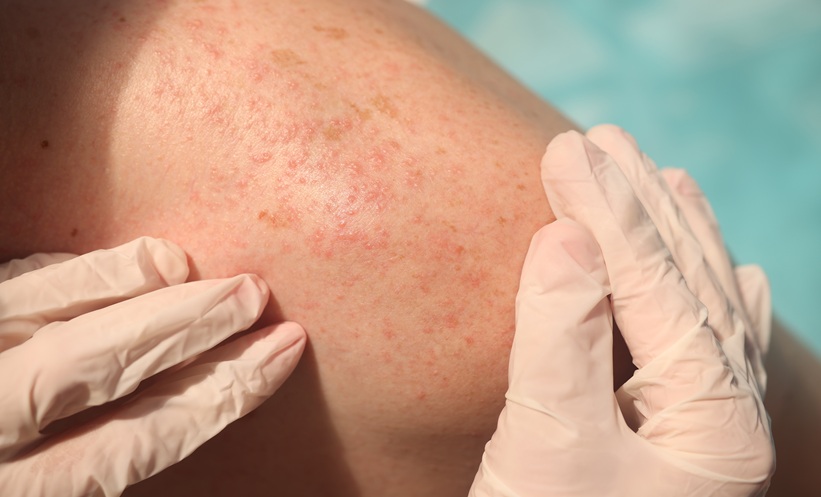In epidemiological studies, it has been shown that exposure to airborne, traffic-related particulate matter (PM) is associated with increased skin sensitivity and signs of skin ageing, including pigment spot formation.1,2 For example, fine carbon black (Huber 990; H Haeffner & Co. Ltd., Chepstow, UK) and diesel exhaust particles, such as SRM1650 and SRM2975, induce the production of soluble inflammatory mediators (interleukin [IL]-1, IL-6) and skin pigmentation markers (pro-opiomelanocortin [POMC]) in human keratinocytes. Previous studies also indicate that the combination of ultraviolet (UV) radiation and pollution may result in synergistic effects.2 The aim of this study was to evaluate whether La Roche-Posay Thermal Spring Water (LRP-TSW)3 was able to inhibit or decrease pollution and UV pollution-induced damage in human keratinocytes.
Gene expression of keratinocytes cultured in cell culture medium MCDB153 dissolved in LRP-TSW was compared to that of keratinocytes cultured in the same medium prepared with deionised drinking water. Total RNA isolation and polymerase chain reaction (PCR) techniques were carried out 24–48 hours after exposure to pollution particles or pollution particles plus UV exposure. Messenger RNA (mRNA) expression of IL-1α/18S ribosomal RNA (rRNA), IL-6/18S rRNA, and POMC/18S rRNA was measured. The PM used in this study were diesel exhaust particles SRM1650 and SRM2975 or Huber 990. Exposure to UV radiation was performed using either a total UV spectrum lamp (solar simulated radiation [SSR]) or under a UVA1 radiation lamp (340–400 nm).
At 24 hours post exposure, we observed a significant (p<0.05) upregulation of the proinflammatory marker IL-6 when keratinocytes were exposed to SRM1650 and SRM2975 particles. LRP-TSW significantly (p<0.05) reduced this upregulation by 43% and 100%, respectively. At 48 hours post exposure, we observed a significant upregulation of IL-1α expression when keratinocytes were exposed to SRM1650 and SRM2975 particles. LRP-TSW significantly (p<0.05) protected against this upregulation by 42% and 53%, respectively. We also observed a significant upregulation of the pigmentation marker POMC with exposure to SRM1650 particles and that LRP-TSW was able to significantly (p<0.001) inhibit this upregulation (Figure 1).

Figure 1: The upregulation of pro-opiomelanocortin pigmentation marker by exposure to traffic particulate matter SRM1650.
PM: particulate matter; POMC: pro-opiomelanocortin; LRP-TSW: La Roche-Posay Thermal Spring Water.
Keratinocytes were then exposed to PM SRM2975 alone and in combination with SSR. The keratinocyte response suggested increased IL-6 gene expression due to the addition of SSR exposure versus traffic PM alone. LRP-TSW significantly (p<0.001) prevented this synergistic effect. When keratinocytes were exposed to the combination of PM SRM2975 and UVA1 radiation (long-UVA) (10 J/cm²), a significant upregulation of POMC was observed, as well as a significant protective effect (p<0.001) by the addition of LRP-TSW (Figure 2). Similar protection (p<0.001) was noted for the upregulation of IL-1 with PM Huber 990 and UVA1 radiation exposure.

Figure 2: The upregulation of proopiomelanocortin pigmentation marker by exposure to traffic particulate matter alone and in combination with UVA1.
LRP-TSW: La Roche-Posay Thermal Spring Water; PM: particulate matter; POMC: proopiomelanocortin; UVA1: ultraviolet A1 radiation.
This study confirms that pollution particles are able to induce inflammatory and pigmentation mediators in human keratinocytes and that the combination of these particles with UV radiation has a synergistic effect. We demonstrated that LRP-TSW was able to inhibit inflammatory and pigmentation mediator upregulation by traffic PM alone or in combination with UV radiation. These data confirm the utility of using LRP-TSW to
protect the skin against pollution.








